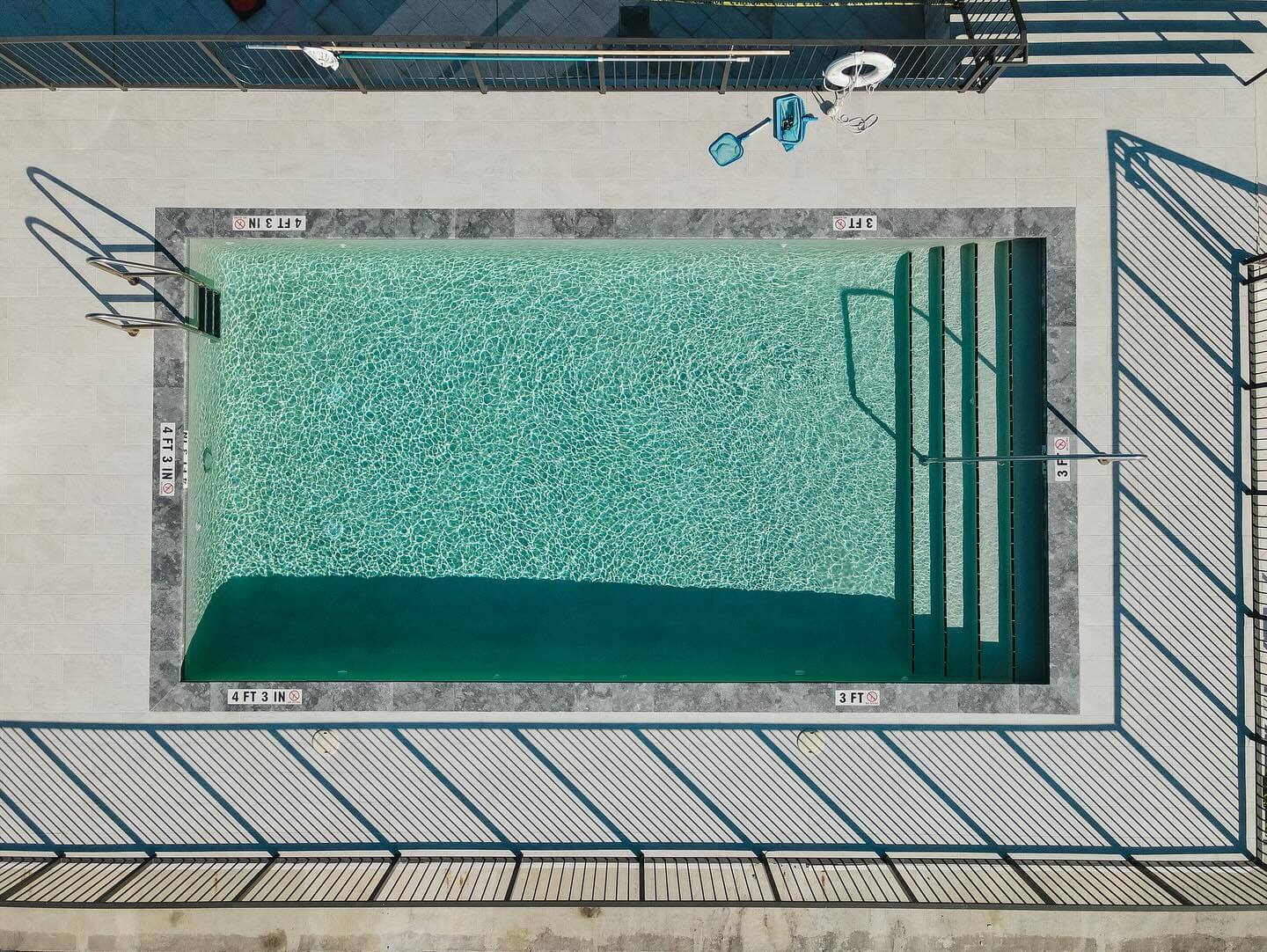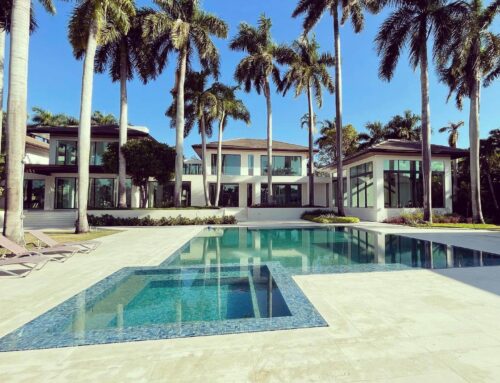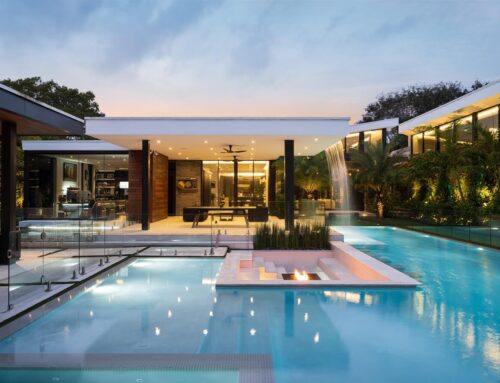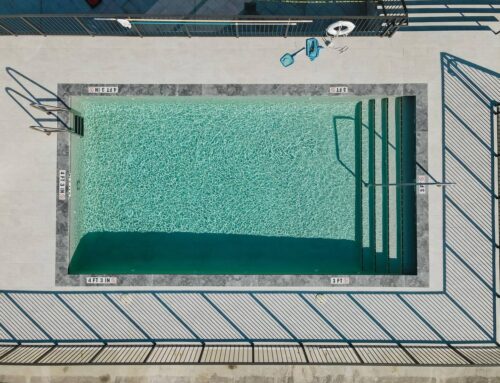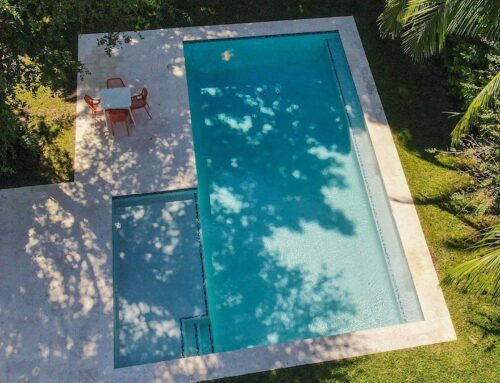Inground pools are a popular addition to new construction or custom-built homes. Swimming pools can be used all year long depending on where you live and provide a number of health and social benefits. What are the steps to in-ground pool installation at your home, and what is the cost?
Florida Pool Patio has provided a list of things to consider and what you can expect when you start your journey toward owning an in-ground swimming pool.
Location, Size, and Terrain Suitability
Imagine your backyard as a canvas, and your in-ground swimming pool as your piece of art. The size of the canvas will dictate the size of the artwork. In the end, your backyard is going to be the most important factor in determining what size and shape pool you can have.
Many backyards have large slopes or other conditions that make it difficult to build a pool. This can limit your options. Many cities and states have specific rules about how close you can place a pool to your property or fence. Before finalizing your installation plans, be sure to read all applicable guidelines. Research and get any city permits needed to add an in-ground pool to your property.
After determining the size and shape of the pool, choose the in-ground type that best suits your budget and needs.
GET A FREE QUOTE
CONTACT US AT (305) 590-5263
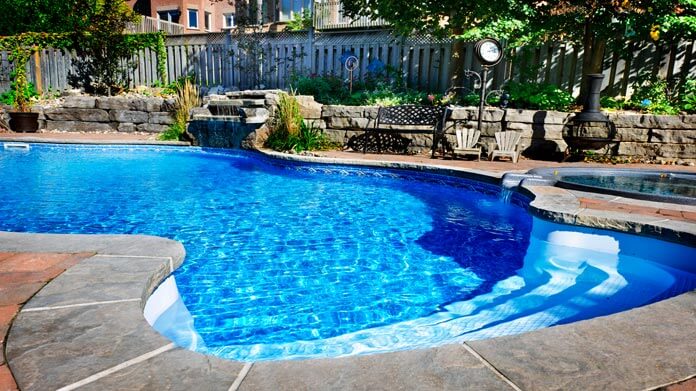
Three Main Types of In-ground Pools
Most pool retailers offer three options for in-ground pools: vinyl liners, concrete/gunite, or fiberglass. We’ll briefly examine the pros and cons for each.
Vinyl Liners
Pros: The most cost-effective type of pool. Easy to adapt to any desired size and shape.
Cons: Prone to damage and repair. Overall, the lifespan is much shorter than other options.
Concrete/Gunite
Pros: Longer lifespan than vinyl. Many sizes and shapes available in the market.
Cons: The porous nature of the materials requires constant chemical treatment and maintenance. Initial construction takes longer than fiberglass. Requires complete resurfacing in 15 to 20 years on average.
Fiberglass
Pros: One of the longest-lasting pool materials. Maintenance costs are lower than for concrete or vinyl. Fastest initial installation time.
Cons: Depending on the size and options, it may be more expensive than concrete. The pool shell is made before delivery, so it may not be the exact shape and size that customers are looking for.
In the retail pool industry, there is a consensus that vinyl liner pools make a good entry-level choice if you are concerned about initial costs. Concrete or fiberglass pools are a better choice if your budget permits.
Although the initial installation costs may be higher than vinyl, your pool’s overall cost will be lower. Fiberglass pools are the most cost-effective and have the longest lifespan of all three types of pools.
The Costs of Inground Pool Installation in Miami
The cost of installing a pool is influenced by various factors. Below are some general estimates of the costs. The size and shape of the pool, the terrain you’re working in, any added items to your basic pool package, and your location largely determine the costs.
General Cost Estimates for Pool Type
The cost estimates provided are based on a standard pool shape and size with minimal obstacles during installation. Costs can vary depending on your geographic location and the availability of local retailers. For a more detailed estimate, it is recommended to contact your local pool retailer.
- Vinyl Liners: $30,000 and up
- Concrete/Gunite: $40,000 to $45,000 and up
- Fiberglass: $45,000 and up
Several factors can impact the cost of installing a pool:
Accessibility Issues: If heavy equipment cannot easily reach your backyard, installation costs may rise.
Wet Soil Challenges: If your ground soil is excessively wet, extensive pumping may be necessary, contributing to higher costs.
Grading and Leveling: In some cases, you might need to grade and level a significant portion of your yard, adding to the installation expenses.
Utility Line Relocation: If there are underground utility lines, they may need to be relocated, affecting installation costs.
Rocky Underground Terrain: Dealing with massive rocks underground can prolong the installation process, leading to higher than average costs.
Additionally, choosing certain extras for your pool package can impact the overall expense:
- Diving Board with Slide
- Extensive Underwater Lighting
- Custom Pool Steps
- Heating System
- Tiling the Pool Area or Patio
- Separate Hot-Water Spa (increases overall cost)
Consider purchasing your pool during the “off-season” (fall/winter) when local retailers may offer discounted pricing. While your pool might not be ready for several months, the potential savings could make it worthwhile.
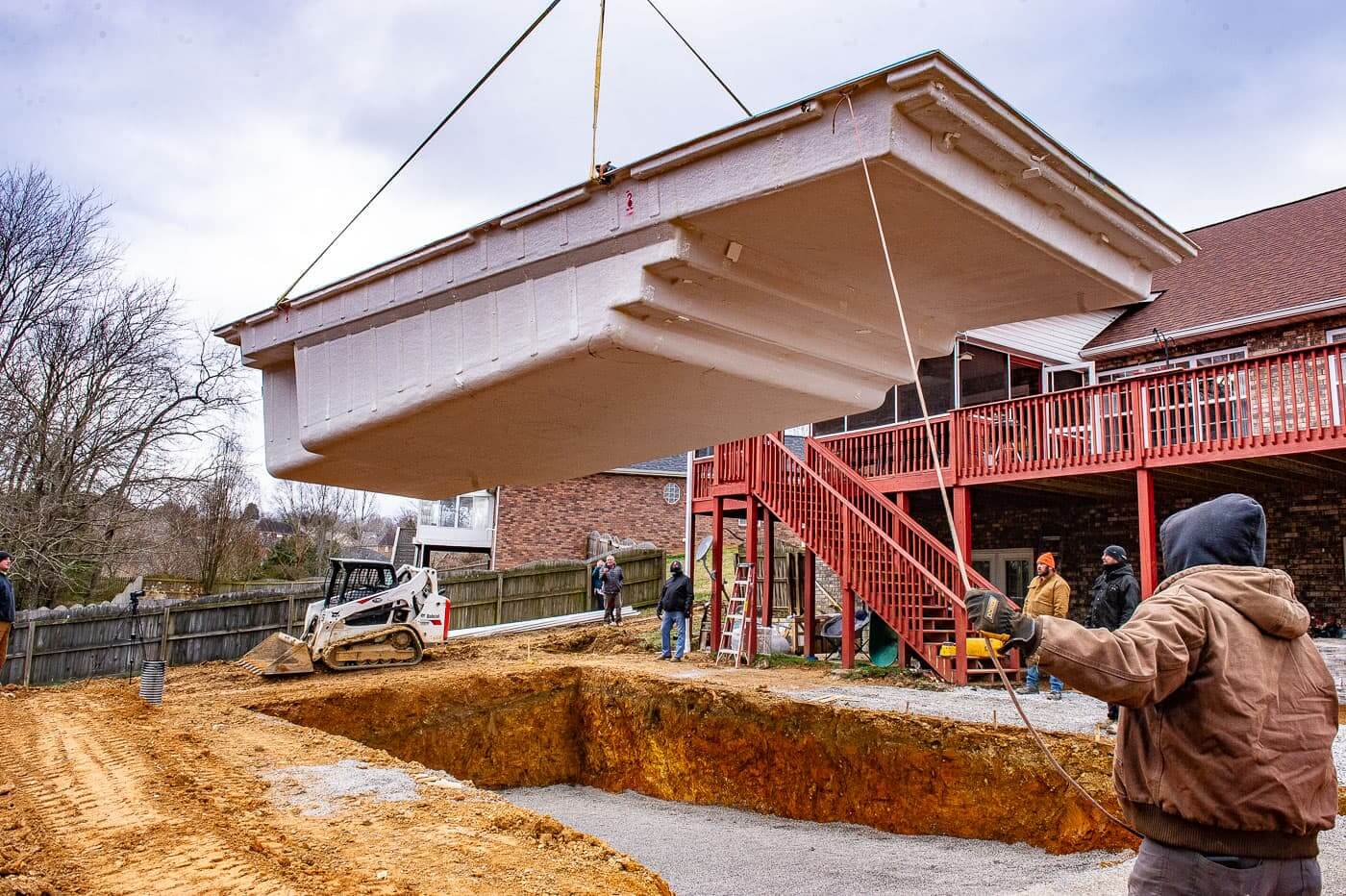
Fresh Water vs. Salt Water Pool
In the past decade, there has been a noticeable shift in favor of saltwater pools in the pool industry. Saltwater pools are not only less expensive to maintain but also require less attention to water quality. Moreover, they have a milder impact on the skin and patio materials compared to chlorine-based pools. It’s worth noting that saltwater pools still utilize chlorine for water sanitation. However, they convert salt into a lower concentration of chlorine before reintroducing the water into the pool.
A key component of saltwater pools is the salt cell, or salt chlorinator, typically positioned near the external pump and filter. Regular testing is crucial to ensure that chlorine, alkalinity, and pH levels remain within acceptable limits. Owners can easily use salt test strips to check the pool’s salinity.
Unlike traditional chlorine methods, bags of salt can be directly added to the pool as needed. They are generally more economical, easier to handle, and simpler to transport compared to chlorine tablets and powders. A common misconception about saltwater pools is their salinity level. In reality, the salinity is only 25% that of a tear, meaning there’s no need to worry about irritation to your eyes or skin.
Miami Inground Pool General Installation Times
The time it takes to install your pool depends on various factors, including the time of the year, installer availability, pool size, complexity, and unexpected issues. Here’s a breakdown of the minimum installation time for each pool type:
Vinyl Liners
Between 2 and 6 weeks. Vinyl pools can be set up faster than concrete ones because they are pre-made. Opting for existing pool kits can speed up the installation process.
Concrete
Four to seven weeks. Concrete pools typically take the longest to install since most of the work is done on-site. Additionally, the concrete or gunite material needs time to “cure” or dry for several weeks after pouring, pausing most of the construction temporarily.
Fiberglass
Installing a fiberglass pool can take between 2 and 3 weeks. Fiberglass pools usually boast the quickest installation times. They are made offsite and then lowered into the excavated area in your backyard, making the process swift and straightforward.
Ready to Dive into Your Dream Miami Pool?
Transform your Miami backyard into a tropical oasis with a stunning inground pool from Florida Pool Patio. Our expert team is ready to turn your vision into reality.
Embrace the Miami sunshine and enhance your outdoor living experience with a customized inground pool. Contact us today to make a splash with the perfect pool for your Miami paradise!
Our Pool Services in South Florida

